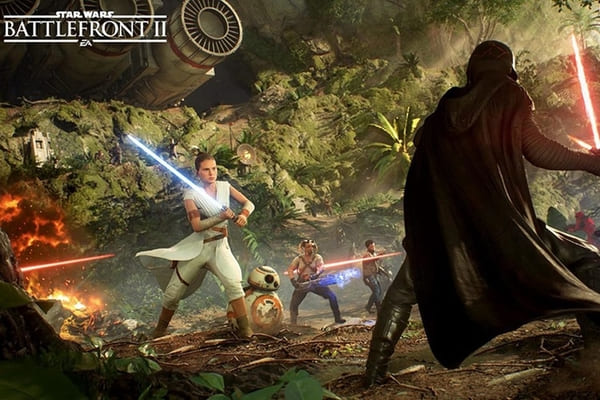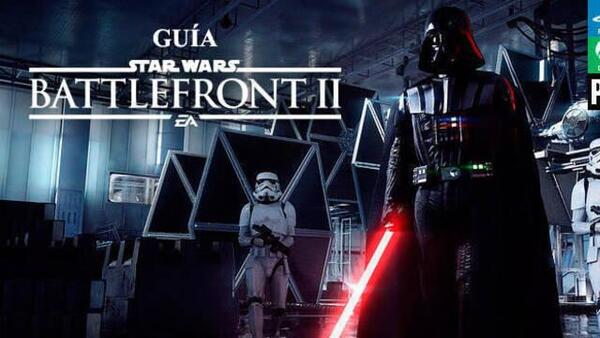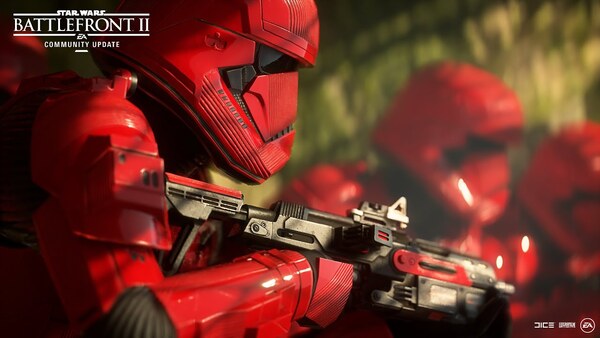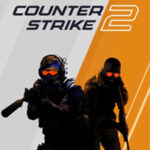Advertisement
Popular Now
Introduction
In recent years, microtransactions have become an increasingly common feature in video games, especially within large-scale online multiplayer titles. While some developers have used microtransactions to offer cosmetic items, others have incorporated them into gameplay mechanics, causing significant controversy. One of the most high-profile examples of this debate is "Star Wars: Battlefront II" (2017), developed by Electronic Arts (EA) and DICE. The game's initial release featured a heavily criticized "pay-to-win" model, where players could purchase in-game items that gave them advantages over those who did not spend extra money. This issue became one of the most discussed in gaming communities and eventually led to widespread backlash, forcing EA to rework the microtransaction system entirely. This article explores the rise of the "pay-to-win" model in "Star Wars: Battlefront II," its impact on the game's community, the consequences for EA and the gaming industry, and the eventual changes made to the game's business model. Through this detailed examination, we will see how the game’s monetization strategy impacted player experiences and the industry at large.
Understanding the "Pay-to-Win" Concept in Video Games
The "pay-to-win" concept refers to a game model in which players can purchase in-game advantages that directly affect gameplay. These advantages often come in the form of powerful items, upgrades, or characters, which would otherwise take considerable time or effort to unlock through regular gameplay. For many players, this concept is frustrating because it creates a disparity between those who are willing or able to spend money and those who are not. In the case of "Star Wars: Battlefront II," the game initially included loot boxes that could grant players powerful cards and upgrades, which could be purchased using real money. These loot boxes gave paying players a distinct advantage, as they could quickly unlock items that would take non-paying players much longer to obtain. This system raised the ire of the community, as many felt that the integrity of the game was compromised by the ability to purchase gameplay advantages.The Launch of "Star Wars: Battlefront II" and the Initial Backlash
When "Star Wars: Battlefront II" launched in November 2017, it was heralded as one of the most anticipated titles of the year. However, players quickly discovered the game's microtransaction system, which included the controversial loot boxes and "Star Cards" (the in-game upgrades that could give players an advantage). These loot boxes could be purchased with real money, or they could be earned through regular gameplay, though this process was slow and random. The backlash began almost immediately, with players voicing concerns on social media and gaming forums about the fairness of the system. Many players complained that the ability to purchase power-ups through loot boxes gave paying players an unfair advantage over non-paying players, undermining the competitive nature of the game. This was especially troubling for players who enjoyed multiplayer modes, where balanced and fair competition is critical.Loot Boxes and the Influence on Competitive Balance
Loot boxes became a central point of contention in "Battlefront II." These loot boxes contained random rewards that could include Star Cards, which affected the strength and abilities of characters in the game. In the early stages, players who spent money on loot boxes could obtain rare Star Cards that made their characters stronger, giving them an edge in combat. This made it difficult for non-paying players to compete, as the benefits of loot boxes were often more significant than any skill-based advantage. This imbalance made the gameplay feel unfair, especially for those who wanted to compete purely based on their skills rather than their spending power. For example, a player who had spent significant money on loot boxes might have access to stronger abilities, such as increased health or damage resistance, which would make them harder to defeat in combat. This was particularly damaging in competitive modes, where players' performance was directly tied to their progression and success.The "Pay-to-Win" Debate Heats Up
 The outrage surrounding the "pay-to-win" mechanics of "Battlefront II" reached a boiling point when the game was launched in some territories. Players took to social media platforms, such as Reddit and Twitter, to voice their displeasure. The situation became even more tense when prominent figures in the gaming community, such as YouTubers and streamers, started criticizing the game's monetization practices.
As the controversy escalated, EA attempted to address the complaints by making some changes. In response to the growing criticism, the company reduced the power of Star Cards in gameplay, ensuring that loot boxes would no longer provide significant gameplay advantages. However, these changes did little to quell the discontent from the community. Many players felt that the damage had already been done, and the game's reputation was tarnished beyond repair.
The outrage surrounding the "pay-to-win" mechanics of "Battlefront II" reached a boiling point when the game was launched in some territories. Players took to social media platforms, such as Reddit and Twitter, to voice their displeasure. The situation became even more tense when prominent figures in the gaming community, such as YouTubers and streamers, started criticizing the game's monetization practices.
As the controversy escalated, EA attempted to address the complaints by making some changes. In response to the growing criticism, the company reduced the power of Star Cards in gameplay, ensuring that loot boxes would no longer provide significant gameplay advantages. However, these changes did little to quell the discontent from the community. Many players felt that the damage had already been done, and the game's reputation was tarnished beyond repair.
EA's Response to the Outrage: Temporary Removal of Microtransactions
In the face of mounting pressure from players, EA took a dramatic step in December 2017: the company temporarily disabled all microtransactions in "Star Wars: Battlefront II." This move was seen as a direct response to the growing backlash, with many players arguing that the game had become "pay-to-win" and that it was fundamentally broken due to the prevalence of loot boxes. EA's decision to remove microtransactions was a turning point for the game. It signaled to players that the company was at least somewhat responsive to community feedback. However, EA did not completely abandon the loot box system, instead promising to overhaul it and make it more in line with player expectations. Despite the removal of microtransactions, the damage had been done, and the game continued to suffer from the stigma associated with its initial release.Reworking the Microtransactions: EA's New Strategy
After the temporary removal of microtransactions, EA worked to rework the in-game economy and remove the "pay-to-win" elements. In early 2018, the company reintroduced microtransactions, but this time they were limited to cosmetic items only. Loot boxes, which previously contained gameplay-affecting items, were now exclusively for cosmetic upgrades, such as skins and emotes. This change was a significant shift in how "Star Wars: Battlefront II" operated. By removing the ability to buy gameplay-affecting items, EA aimed to ensure a level playing field for all players, regardless of how much money they spent. While this change was welcomed by the community, many players still felt that the original issues had not been adequately addressed. Despite these cosmetic changes, the game's reputation had already taken a hit, and some players felt that the damage was irreversible.The Role of Player Feedback and Community Outcry
 The massive outcry from players played a crucial role in the eventual changes to "Star Wars: Battlefront II." Community feedback helped to shape the direction of the game’s development, with EA recognizing the importance of listening to the concerns of players. Social media and online communities became powerful platforms for players to voice their dissatisfaction, and their collective voices had a measurable impact on the game’s progression.
However, this situation also raised broader questions about the role of microtransactions in video games. Should players be able to pay for advantages in competitive titles, or should games be designed to ensure a fair experience for everyone, regardless of their spending power? The debate sparked by "Battlefront II" had wide-reaching implications, influencing the broader gaming industry and leading to increased scrutiny of other games that included microtransactions.
The massive outcry from players played a crucial role in the eventual changes to "Star Wars: Battlefront II." Community feedback helped to shape the direction of the game’s development, with EA recognizing the importance of listening to the concerns of players. Social media and online communities became powerful platforms for players to voice their dissatisfaction, and their collective voices had a measurable impact on the game’s progression.
However, this situation also raised broader questions about the role of microtransactions in video games. Should players be able to pay for advantages in competitive titles, or should games be designed to ensure a fair experience for everyone, regardless of their spending power? The debate sparked by "Battlefront II" had wide-reaching implications, influencing the broader gaming industry and leading to increased scrutiny of other games that included microtransactions.

















